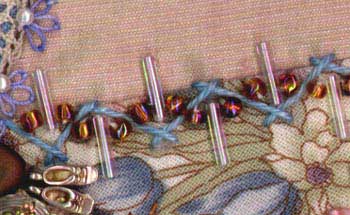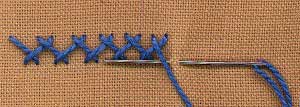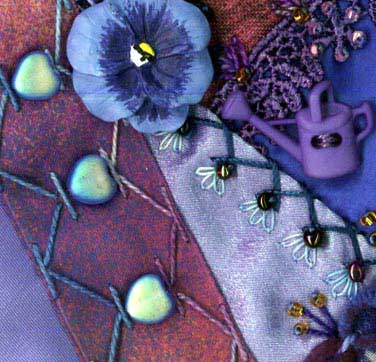Herringbone Stitch

![]()
Herringbone stitch is also known as Mossoul stitch, Persian stitch, Russian stitch, Russian cross stitch, plaited stitch, catch stitch and witch stitch.
Herringbone is an old stitch which has many variations. In the fourteenth century the Italian painter Giotto illustrated herringbone worked with great precision on the borders of garments. Herringbone creates a regular crossed zigzag line.
This versatile stitch can be used to couch ribbon, cord and heavier threads or can be laced with contrasting threads. Herringbone is also used as a foundation row for many composite stitches. Herringbone and its variations is often to be found in crazy patchwork.

This stitch is worked from left to right along parallel lines. To keep the width of the stitches even, guide-lines need to be marked on the fabric. To do this, use one of the fade out or water dissolvable pens available.
Commence by bringing the needle out on the left-hand side of the line to be worked. Make a small stitch on the upper line which points to the left. Keep the thread below the needle and pull it through the fabric. Insert the thread on the lower line a little to the right and make a small stitch which points to the left. Pull the needle through the fabric with the thread above the needle.

Herringbone Stitch Family
There are many other stitches in this group. The stitches that I have listed here in the Herringbone family are:
And related to herringbone is the chevron stitch group
